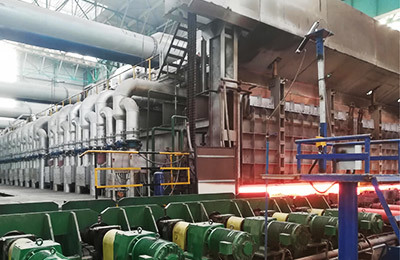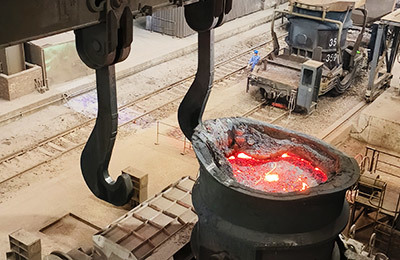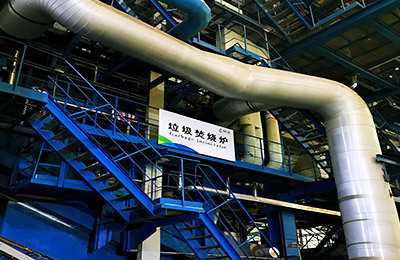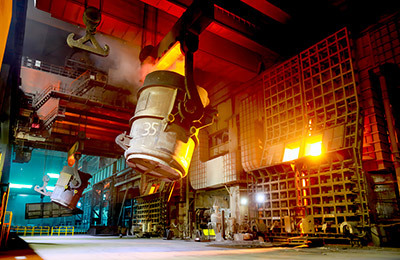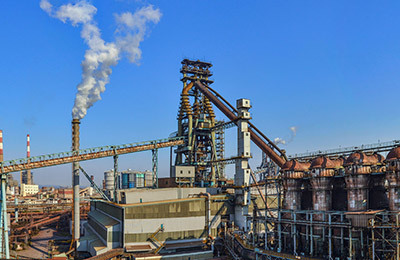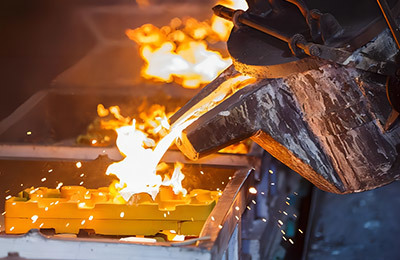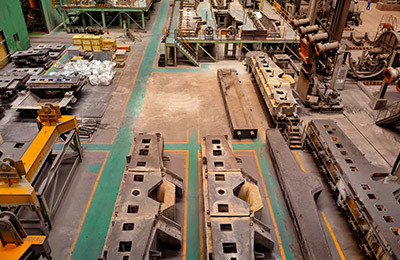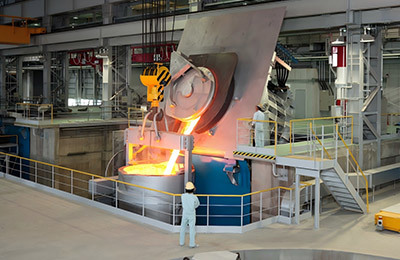Production and operation of national refractory industry from January to March 2016
Release time:
2016-05-21
Author:
Source:
Overall Operation of Industries Above Designated Size in 1.
In March 2016, the value added of industries above designated size increased by 6.8 in real terms year-on-year (the following value-added growth rates are all real growth rates net of price factors), 1.4 percentage points faster than in January-February. From a month-on-month perspective, in March, the added value of industries above designated size increased by 0.64 over the previous month. In the first quarter, the added value of industries above designated size increased by 5.8 percent year-on-year.
1. From January to March, the main business income of industrial enterprises above designated size was 24.67 trillion yuan, an increase of 2.4 percent over the same period last year, and the main business cost was 21.06 trillion yuan, an increase of 2 percent.
2. From January to March, the total profits of industrial enterprises above the national scale reached 1.34 trillion billion yuan, an increase of 7.4 percent over the same period last year, and the growth rate was 2.6 percentage points higher than that in January-February.
From January to March, the profit margin of the main business income of industrial enterprises above designated size was 5.44, the cost of each hundred yuan of main business income was 85.36 yuan, the main business income realized per hundred yuan of assets was 102.4 yuan, the per capita main business income was 1.106 million yuan, and the turnover days of finished goods inventory was 15.4 days.
3. At the end of March, the accounts receivable of industrial enterprises above designated size was 11.03 trillion yuan, up 8.3 percent from the same period last year. Inventory of finished goods was 3.63 trillion yuan, the same as the same period last year.
Production and Operation of Refractory Industry in 2. from January to March 2016
1. Production of refractory materials
From January to March, the national refractory output was 4.348 million tons compared with the same caliber, down 11.67 percent from the same period last year. Among them, 2.942 million tons of dense shaped refractory products, down 7.68 percent from the same period last year; 99400 tons of thermal insulation refractory products, up 5.34 percent from the same period last year; and 1.3066 million tons of unshaped refractory products, down 20.39 percent from the same period last year.
2. Import and export trade of refractory raw materials
In the first quarter, the country's import and export trade of refractory raw materials totaled US $0.652 billion billion, a decrease of 21.09 percent over the same period last year. Among them, the export trade volume was 0.621 billion US dollars, down 21.49 percent year-on-year; the import trade volume was 0.031 billion US dollars, down 9.38 percent year-on-year.
The total export volume of refractory raw materials nationwide was 1.1691 million tons, down 3.82 percent year on year. Among them, the export volume of refractory raw materials was 790800 tons, down 1.86 percent from the same period last year; the export volume of refractory products was 378300 tons, down 7.67 percent from the same period last year.
(1) Export of main refractory raw materials
① The export volume of fused magnesia and sintered magnesia was 7.02 and 113700 tons respectively, up 17.57 and -20.63 respectively.
The export volume of refractory aluminum clay, brown corundum and white corundum was 18.73, 13.71 and 41700 tons respectively, up 2.20, 2.00 and 1.55 respectively.
The export volume of graphite and silicon carbide was 25600 tons and 75800 tons respectively, up 14% and -6.98 respectively.
(2) Export of refractory products
The export volume of alkaline refractory products was 186700 tons, down 8.99 year on year.
The export volume of aluminosilicate refractory products was 168900 tons, up 3.42 year on year.
The export volume of other refractory products was 22700 tons, down 44.95 year on year.
3. Characteristics of export operation
(1) Export prices of main refractory raw materials.
The export prices of graphite, refractory clay, fused magnesia, sintered magnesia, brown corundum, white corundum and silicon carbide decreased by 9.05, 16.34, 8.65, 9.12, 9.36, 15.58 and 3.75 respectively.
(2) The export volume and comprehensive average price of refractory products have been significantly reduced.
From January to March, the export volume of refractory products decreased by 7.67. Among them, the export volume of alkaline refractory products, aluminosilicate refractory products and other refractory products decreased by 8.99, -3.42 and 44.95, respectively.
The combined average export price decreased by 27.05 year-on-year, mainly due to the average export price of alkaline products and aluminum-silicon products decreased by 8.09 and 46.11 year-on-year, respectively. The average export price of other refractory products increased by 11.59.
(3) From January to March, the import volume of refractory products was 3400 tons, down 11.69 from the same period last year. Among them, the import volume of alkaline products was 1000 tons, down 48.98 percent from the same period last year; the import volume of aluminosilicate refractory products was 2300 tons, up 31.12 percent from the same period last year; and the import volume of other refractory products was 69 tons, down 22.48 percent from the same period last year.
The comprehensive average import price of refractory products decreased by 1.03 year-on-year, mainly due to the average import price of aluminosilicate refractory products and other refractory products decreased by 17.03 and 60.88 year-on-year, respectively.
Production and Operation of Main Downstream Industries in 3.
Operation of (I) Iron and Steel Industry
1. Production and operation of China's steel industry
From January to March, the national crude steel output was 0.192 billion tons, a year-on-year decrease of 3.2 percent, and the decline rate expanded by 1.5 percentage points year-on-year; steel output was 0.262 billion tons, a year-on-year increase of zero, and an increase of 2.5 percent in the same period last year.
2, the world steel industry production.
In the first quarter, the world's 65 major steel-producing countries and regions produced 0.385 billion tons of crude steel, down 3.7 percent from a year earlier. Among them: China, Japan, South Korea, the United States and Russia showed varying degrees of decline, India has increased.
Production and Operation of (II) Building Materials Industry
In the first quarter, the national cement output was 443.73 million tons, an increase of 3.5 percent over the same period last year, down 3.4 percent in the same period last year; the output of commercial concrete was 333.5 million cubic meters, up 6.1 percent, down 4.4 percentage points from the same period last year. Flat glass production 185.5 million weight box, an increase of 0.5, the same period last year for the decline of 6%.
Production and Operation of Non-ferrous Metals Industry in (III)
In the first quarter, the country's output of ten non-ferrous metals was 12.06 million tons, a year-on-year decrease of 0.4 percent, compared with an increase of 7.7 percent in the same period last year. Electrolytic aluminum production was 7.34 million tons, down 2 percent, up 7.4 percent in the same period last year; copper production was 1.99 million tons, up 8.5 percent, down 5.9 percentage points from the same period last year; lead production was 930000 tons, down 5.8 percent, down 0.9 percentage points from the same period last year; zinc production was 1.45 million tons, down 1 percent, up 14.4 percent in the same period last year. Alumina production was 14.35 million tons, down 0.5 percent, compared with a 15.3 percent increase in the same period last year.
Operating Characteristics and Main Problems of Main Downstream Industries in 4.
1, the downward trend in production will continue.
In the first quarter, the output of major downstream industries showed a downward trend except for cement and flat glass. Among them:
The national crude steel output fell 3.2 year-on-year, a decline of 1.5 percentage points year-on-year. Among the top ten large steel companies in crude steel production, except for Shandong Iron and Steel and Hunan Valin, which increased by 4.9 and 0.07 respectively, the crude steel production of the other eight companies has declined to varying degrees, especially Shougang Group and Hebei Iron and Steel Group. The crude steel production decreased by 19.15 and 11.33 respectively.
In the first quarter, global crude steel production fell by 3.7 year-on-year, the main steel-producing countries in addition to India, a year-on-year growth of 1.8, other countries (regions) also have different degrees of decline, of which the European Union and Russia fell by 7.2 and 5.2, respectively.
In the first quarter, the country's output of ten non-ferrous metals fell 0.4 percent year-on-year (up 7.7 percent in the same period last year), but the first decline in recent years. Among them, electrolytic aluminum decreased by 2.0 year-on-year, 9.4 percentage points lower than the same period last year; copper production increased by 8.5 year-on-year, and the growth rate dropped by 5.9 percentage points year-on-year; alumina production decreased by 0.5 year-on-year, 15.8 percentage points lower than the same period last year.
2, the main downstream industry product prices have rebounded, but year-on-year downward trend.
In March, the composite price index of steel in the domestic market averaged 67.13, up 8.59 points from the previous month, but down 7.54 points from the same period last year; cement prices rose 0.4 percent from the previous month, but down 18.8 percent from the same period last year; flat glass prices were the same as the previous month, but down 1.3 percent from the same period last year; and the average futures prices of copper, electrolytic aluminum and zinc rose 2.6 percent, 3.6 percent and 8.2 percent, respectively, however, they fell 14.2 per cent, 14.3 per cent and 13.8 per cent respectively.
Therefore, the first quarter of the main downstream industry product price recovery is the product price low hovering in the process of periodic fluctuations in the recovery, difficult to sustain. Judging from the financial indicators (KuaiBao) of member enterprises of the Iron and Steel Association, profits in the first quarter increased by 659.1 percent compared with the same period last year, and the number of loss-making enterprises decreased by 29.41 percent compared with the same period last year, but the losses of loss-making enterprises increased by 44.26 percent compared with the same period last year. The tough run of the industry will continue.
Two Problems of 5. Refractive Material Production Enterprises Should Pay Attention
1. The problem of capital is still the primary problem for production enterprises to ensure operational safety.
Refracuture production enterprises must raise the management of funds to the height of the impact of business safety to understand. At present, the payment receivable of refractory production enterprises is still rising, the production liquidity is extremely tight, the pressure of financial expenses is increasing, and the recovery of payment is extremely difficult. Some production enterprises have been difficult to maintain normal operations. In this regard, the production enterprises should calmly recognize the current business situation, concentrate on strengthening the recovery of receivables, check the amount of arrears with the arrears unit every year and confirm the amount of arrears, to ensure that the arrears in the validity period of legal proceedings, the "drop point payment" unit of the breach of contract resolutely resist. At the same time, it is necessary to truly refuse to ship to units that cannot pay normally, and strictly prevent the continuous increase in the amount of payment receivable to ensure the safety of the business.
The average export price of the main export varieties of refractory raw materials and products has dropped significantly, which should attract the attention of export enterprises.
In the first quarter, the comprehensive average export price of refractory raw materials decreased by 7.8 year-on-year, of which the average export prices of refractory aluminum clay, white corundum and graphite decreased by 16.34, 15.58 and 9.05 respectively. The comprehensive average export price of refractory products decreased by 27.05 year-on-year. In particular, the average export price of aluminosilicate refractory products decreased by 46.11 year-on-year; the average export price of alkaline refractory products also continued the downward trend of the previous year, down 8.09 year-on-year.
The reason for the sharp drop in the average export price is inevitably the result of disorderly competition in the market, which affects the quality of operation of export enterprises and easily leads to trade disputes, which should really arouse the great attention of export enterprises.
Related Blog

